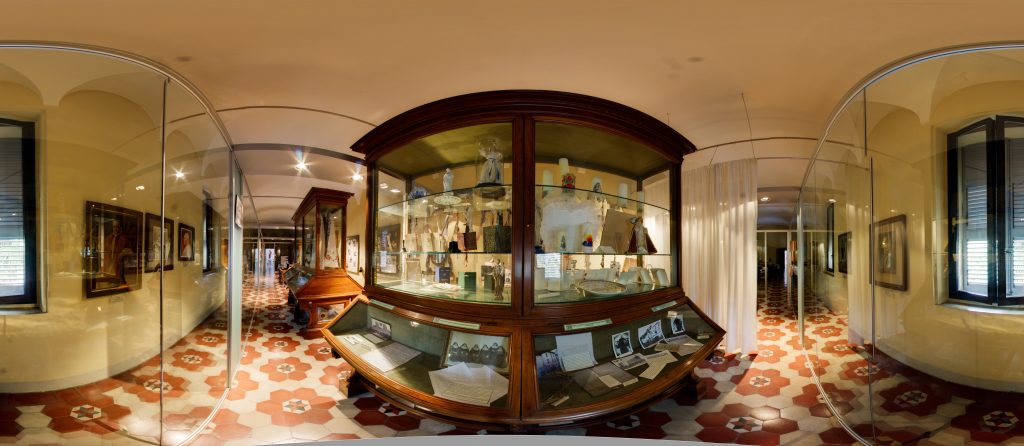Giovanni Battista Scalabrini: a holy bishop, from Piacenza to the world
The museum of the Scalabrinian Sisters in Piacenza and the holy bishop’s furnishings
The museum of the Scalabrinian Sisters in Piacenza and the holy bishop’s furnishings
MENU
The museum of the Scalabrinian Missionaries located in the headquarters of the community in Piacenza, Piazzetta San Savino, 29, tells the story of the Congregation of the Missionary Sisters of Saint Charles Scalabrinians through historical sources, photographic reports and objects of daily life. For the visitor, it is a proposal for a journey, an experiential and symbolic itinerary that allows him to learn about the history of a great mission, its founders and foundresses, but above all invites him to leave, as missionaries did and do today, to leave their own land to follow a vocation, for something great, always with trust and hope in what is to come. The museum is divided into four sections: in the first section are, among others, some photographs of Bishop Scalabrini with the first missionaries sent to Brazil, the original altar of the chapel of the Convent of the Scalabrinian Sisters and some trunks, the main luggage of all those who set out for a new homeland.
The second section collects the testimonies of the first missionary sisters of Saint Charles and displays the portraits of the popes who accompanied and supported the work of Scalabrini.
The third section recounts the Congregation’s return to Italy after so many years spent in Brazil, while the fourth section houses some personal effects of Mother Lucia Gorlin, a fundamental figure in the history of the Congregation.
In addition to the museum dedicated to the history of the congregation, the institute of the Scalabrini Missionary Sisters in Piacenza houses a room dedicated to the memory of Saint John Baptist Scalabrini. It is an orderly collection of documents, photographs, furniture and objects of daily life that tell aspects of the saint’s life and that the missionary nuns make available for visits by the population, tourists, pilgrims and guests of the Piacenza home. The museum was arranged between 2005 and 2006 by Sister Bruna Birollo and Sister Ermelinda Pettenon.
Inside, all the furnishings and objects invite the visitor to pause in prayer and meditation, starting with Monsignor Scalabrini’s death bed and his kneeler. Also, near the bed, some photographs narrate the beginning and end of the saint’s earthly life, and an image of St. Charles Borromeo holding a plague patient recalls Scalabrini’s great devotion to the latter. A number of showcases also contain objects from the prelate’s daily life, which came to the Scalabrini sisters thanks to the collaboration of Carlo Spalazzi, then a trusted waiter of Giovanni Battista Scalabrini.
An important space is dedicated to the net on which the saint’s body was laid when it was exhumed in 1997. Curious and important, then, is the collection of all those objects linked to the episcopal ministry and missionary charisma of the ‘apostle of migrants’, such as a small folding altar and suitcase, used on ship journeys.
Many other documents, photographs, vestments, complete the collection and narrate the tireless work of our Holy Bishop.
Please , update your browser







